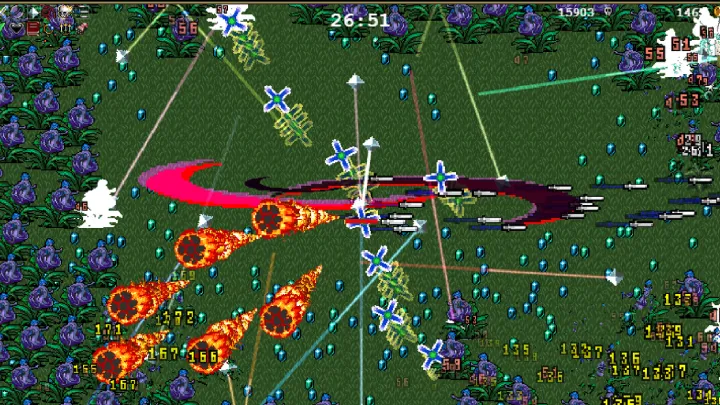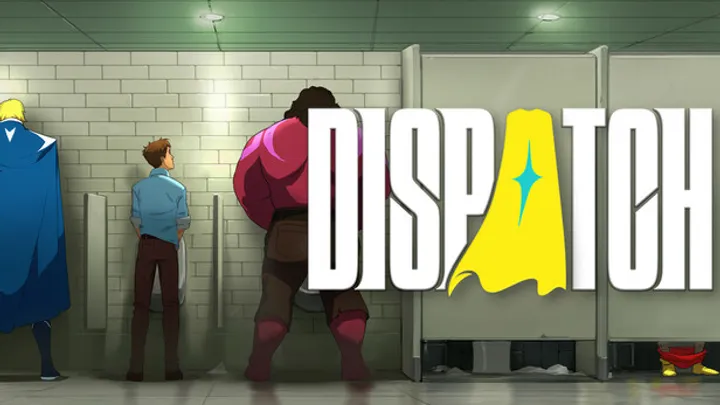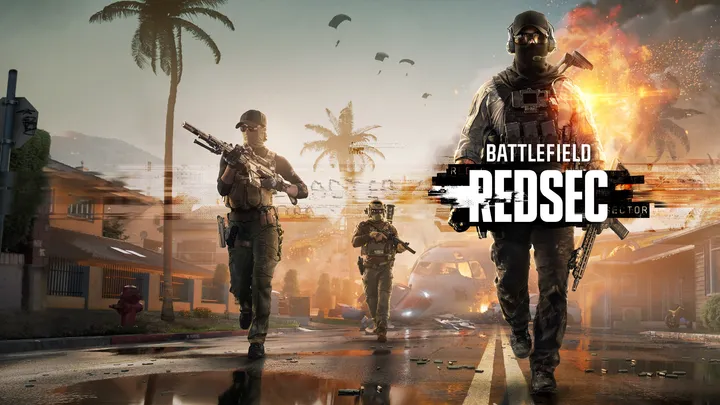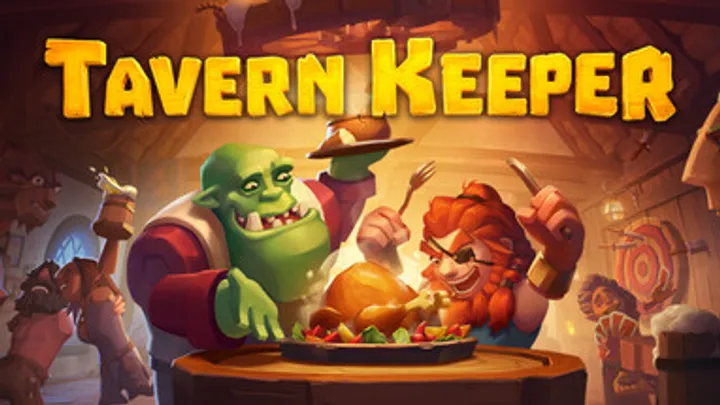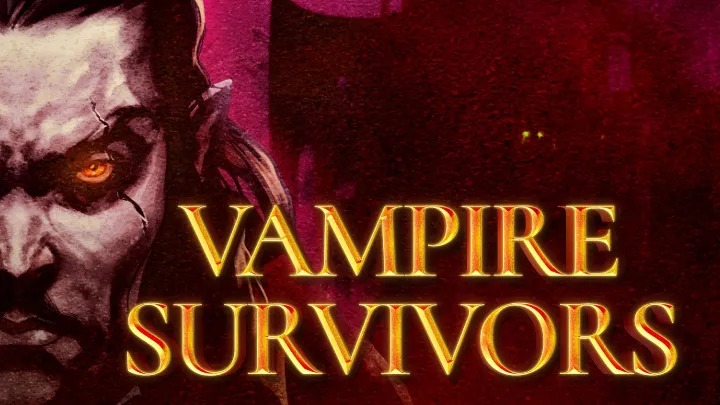
Introduction
Vampire Survivors, developed by Poncle, emerged from the indie game scene as a unique blend of roguelike mechanics and minimalist gameplay. Players are thrust into an unending cycle of waves filled with monsters that grow increasingly intense, all while leveraging the power of weapons, upgrades, and character abilities. One of the most compelling issues within Vampire Survivors is the game's progression system, which offers a nuanced exploration of player strategy and reward. This article dives deeply into the mechanics of progression, the impact of character choices, and the evolving strategies that players must adopt to prevail in an ever-increasing challenge.
The Simple Yet Engaging Premise
Gameplay Mechanics Overview
At first glance, Vampire Survivors presents a deceptively simple premise: players control a character that automatically attacks while they maneuver through hordes of monsters for 30 minutes. However, this simplicity masks a layered complexity that unfolds as players accumulate experience points and acquire new weapons and abilities.
The Core Loop of Action
The foundation of Vampire Survivors lies in its addictive gameplay loop. Players start with minimal abilities but gradually unlock more powerful weapons, upgrades, and character traits through defeating enemies and leveling up. This rewarding system encourages players to engage with the game’s mechanics continually.
Key Elements of the Gameplay Loop
- Experience Points (XP) Collection: XP is gained from defeating enemies, which allows players to level up and choose new weapons or enhancements.
- Weapon Diversity: A varied arsenal ensures that players can experiment with different combinations, influencing their strategy significantly.
- Increased Difficulty Over Time: As players progress, the hordes become more challenging, necessitating quick thinking and adaptability in tactics.
The Thrill of Progression
Part of the allure of Vampire Survivors is the sensation of progression. Each run, players feel a tangible sense of growth and empowerment as they collect new skills and become adept at avoiding increasingly difficult threats. This balance between immediate rewards and long-term strategy creates an engaging experience that stimulates continuous play.
The Impact of Character Selection
Diverse Characters and Their Unique Abilities
In Vampire Survivors, players have the option to choose from a diverse roster of characters, each boasting unique abilities and starting weapons. This selection plays a crucial role in shaping the strategy players adopt within their runs.
Assessing Character Strengths and Weaknesses
Each character has distinct advantages that cater to different play styles. For instance, while some characters may excel in ranged attacks, others might offer bonuses that enhance survivability or damage output. Understanding these distinctions is vital for mastering the game.
Notable Characters and Their Traits
- Antonio: A beginner-friendly character with balanced stats and a straightforward weapon, making him an ideal choice for new players.
- Momentos: Specializes in area damage, beneficial for crowd control but requiring precise positioning to maximize effectiveness.
- Gennaro: Offers high damage output, although with lower defensive capabilities, making him perfect for aggressive strategies.
Strategic Implications of Character Choice
The choice of character reflects a player's strategic approach to the game. Understanding the strengths and weaknesses of each character allows players to tailor their gameplay experience, guiding them to adopt specific tactics that align with their abilities. Furthermore, characters unlock specific synergies with weapons and upgrades, determining the success of each run.
The Weapon System: Variety and Synergy
The Arsenal of Destruction
One of the most engaging aspects of Vampire Survivors is its extensive weapon system. Weapons range from basic projectiles to complex area-effect attacks, allowing players to customize their approach to combat significantly.
Weapon Mechanics and Their Evolution
Players can acquire new weapons through leveling up, and the choice that comes with each level presents strategic opportunities. Some weapons scale well into the late game, while others may lose efficacy as the waves become more intense.
Key Weapon Categories
- Projectile Weapons: These include crossbows and knives, which deal damage at a distance while allowing players to maintain mobility.
- Area-Damage Weapons: Weapons like the Holy Water and Fire Wand create zones of damage, suited for managing crowds of enemies.
- Melee Weapons: Close-range options offer high damage potential but require careful positioning to mitigate danger.
The Synergy Between Weapons
Weapon synergy plays a crucial role in enhancing gameplay experience. Certain weapon combinations yield devastating effects, leading to creative strategies as players discover new ways to maximize their damage output.
Examples of Powerful Synergies
- Crossbow and Whip: This combo allows for extended reach and area denial, enabling players to manage hordes effectively.
- Holy Water and Fire Wand: Together, these create a devastating combination of lethal area control, ideal for crowd management.
- Lightning Ring with any Projectile Weapon: The Lightning Ring adds extra damage, ensuring players can deal with large mobs efficiently.
Adapting Strategies Based on Weapon Choice
The choice of weapons directly influences gameplay strategy. Understanding how different weapons interact allows players to develop unique approaches tailored to their chosen character, enhancing replayability and engagement.
The Role of Upgrades: Strategic Depth in Progression
Upgrade Types and Their Importance
As players progress through stages, they encounter various upgrades that significantly influence their performance. These upgrades allow players to fine-tune their character's abilities and adapt to the ever-increasing challenges.
Understanding Upgrade Mechanics
Upgrades include enhancing weapon stats, improving character traits, or providing unique abilities that redefine gameplay. Mastering the strategic application of these upgrades is vital for achieving success in higher difficulty levels.
Key Upgrade Categories
- Power Enhancements: Increase damage output or rate of fire.
- Survivability: Upgrades that improve health, armor, or mobility to evade death.
- Skill Modifications: Unique abilities that redefine how characters engage with enemies or traverse environments.
Strategic Decisions in Upgrading
Players must often weigh the benefits of immediate upgrades against long-term goals. Some upgrades might offer short-term advantages, while others lay the foundation for larger, late-game strategies. This balancing act adds an additional layer of complexity to player decision-making.
Critical Upgrade Strategies
- Immediate Need vs. Long-Term Gain: Players must consider whether to focus on immediate firepower or survivability enhancements.
- Combining Upgrades for Synergy: Understanding how to mix upgrades can significantly amplify weapon effectiveness, creating powerful offensive options.
- Adaptation to Enemy Types: Adjusting upgrades based on the types of enemies encountered during each run can determine survival rates.
The Increasing Difficulty: A Test of Skill and Strategy
Escalating Challenges
As players progress through Vampire Survivors, they face escalating difficulty levels that require adaptive strategies and refined skill sets. The game’s ability to create a progressively challenging environment while maintaining engagement is a key to its success.
Enemy Types and Their Variability
Enemies in Vampire Survivors come in various forms, each presenting unique challenges. Understanding these enemy types and their behaviors is essential for survival, as different strategies are needed for different foes.
Diverse Enemy Classifications
- Melee Enemies: Direct attackers that close in on the player, necessitating strategic positioning and defense.
- Range Attackers: Enemies that strike from a distance, forcing players to dodge or adapt their approach.
- Boss Enemies: Powerful foes that require specific strategies for defeat, often leading to tense moments in gameplay.
The Balance of Skill and Strategy
Successfully navigating escalating difficulty requires not only skill but also strategic foresight. Players must learn to effectively navigate the battlefield, predicting enemy movements while leveraging their own abilities.
Strategies for Overcoming Challenges
- Positioning: Maintaining optimal positioning helps players avoid damage while maximizing attack potential.
- Resource Management: Balancing health and power reserves becomes critical as difficulty increases.
- Adaptive Thinking: Players are encouraged to modify their strategies based on real-time encounters and unexpected challenges.
The Satisfaction of Mastery
Overcoming the escalating challenges presented by Vampire Survivors leads to a deep sense of satisfaction. Players experience tangible growth as they refine their skills, broadening the gap between novice and experienced players.
Community Engagement: Sharing Strategies and Experiences
The Role of Community in Enhancing Gameplay
The Vampire Survivors community has developed rapidly, fostering an environment where players can share strategies, tips, and creative interpretations of gameplay mechanics. This community engagement enhances the overall player experience.
Forums and Content Sharing
Players utilize platforms like Reddit, Discord, and various streaming services to exchange insights and showcase unique game strategies. These platforms often serve as repositories of collective knowledge, enriching the gameplay experience for all participants.
Highlights of Community Engagement
- Shared Strategies: Players publish guides and videos detailing effective tactics and builds.
- Trophy Hunting: Collective engagement in seeking achievements and completing challenges fosters a sense of camaraderie.
- Modding and Customization: Mods that expand upon or alter the core game mechanics allow players to exhibit creativity while keeping the gameplay fresh.
The Impact of Community on Player Growth
The exchange of knowledge in community forums ensures that players continually learn and adapt. By engaging with others, players can better understand nuanced mechanics, which ultimately enhances their skill level.
Evolution of Skills Through Sharing
- Learning from Mistakes: Community discussions often focus on shared failures and successes, fostering a learning environment.
- Expanded Perspectives: Players are exposed to various tactics that can redefine their approach to challenges.
- Innovation: New strategies emerge as the community explores possible synergies and tactics.
The Impact of Updates and Future Content
Continuous Development and Community Feedback
Continuous updates have played a crucial role in the evolution of Vampire Survivors. Feedback from the player base drives many updates, resulting in enhancements that address player concerns and introduce fresh content.
New Characters and Weapons
Regular updates add new characters and weapons to the roster, expanding gameplay choices and enriching strategies further. These additions keep veteran players engaged while enticing newcomers with fresh experiences.
Examples of Recent Updates
- New Character Mechanics: Characters introduced with unique abilities that significantly alter established strategies.
- Expanding Weapon Variety: Fresh weapon types that encourage new tactical approaches to gameplay.
- Balancing Changes: Community feedback often leads to adjustments in weapon effectiveness or character abilities to retain a competitive edge.
The Evolution of Gameplay Experience
As a result of ongoing development and community feedback, the game continues to evolve. Each update reinvigorates the player experience, ensuring that Vampire Survivors remains relevant within the broader gaming landscape.
Strategic Implications of Updates
- Adaptation to New Mechanics: Players must reassess their strategies based on newly introduced characters and weapons.
- Balancing Synergies: Updates can shift the effectiveness of existing synergies, prompting players to explore different tactical combinations.
- Engagement through Novelty: Regular updates introduce opportunities for exploration and experimentation, renewing the gameplay experience.
Conclusion: The Intricacies of Strategy and Progression
Vampire Survivors intricately weaves a tapestry of strategy, character progression, and gameplay mechanics that culminates in a captivating experience. The game’s success is rooted in its ability to empower players through meaningful decision-making while challenging them with escalating difficulty.
The progression system, combined with a diverse set of characters and weapons, fosters an environment where players can continuously experiment and refine their strategies. Community engagement enhances the experience, allowing players to share insights and grow together.
As Vampire Survivors continues to evolve through updates and community feedback, players can expect a constantly refreshing experience that underscores the enduring appeal of strategy and adaptation in gaming. Whether overcoming hordes or collaborating to uncover new tactics, the game’s exploration of player choice offers a rewarding journey into the heart of strategy and progression.